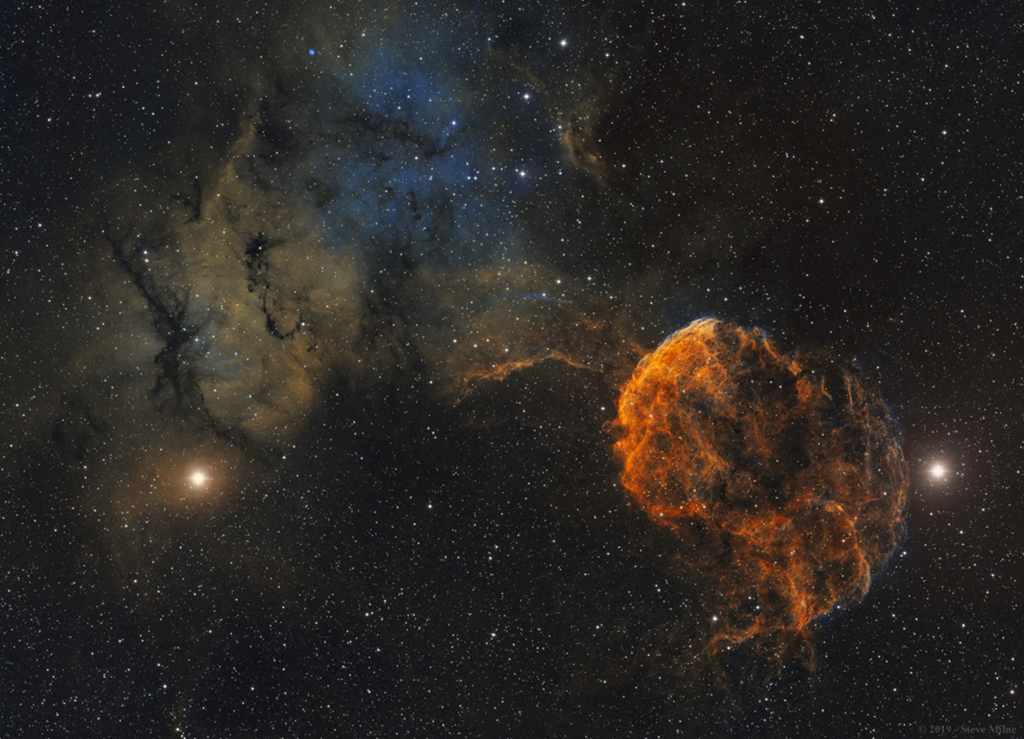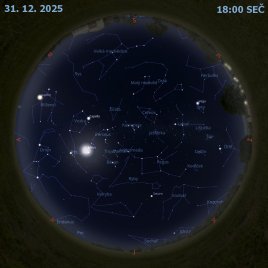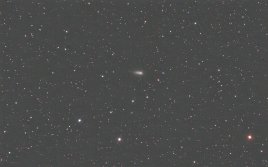Sharpless 249 a mlhovina Medúza

Uznání a copyright: Data - Steve Milne & Barry Wilson, Processing - Steve Milne
Na tomto půvabném teleskopickém pohledu je normálně slabá a prchavá mlhovina Medúza. Celou scénu tvoří mozaika ze dvou panelů zkontruovaných na základě úzkopásmových obrazových dat emise atomů síry, vodíku a kyslíku, která je vidět v červené, zelené a modré barvě. Scénu ukotvují vpravo a vlevo dvě jasné hvězdy Mu a Eta Geminorum, v nohách nebeských dvojčat. Vpravo od středu je jasný oblouk emisního hřebenu s třpytivými chapadly, samotná mlhovina Medúza. Tato kosmická medúza je součástí zbytku supernovy IC 443 ve tvaru bubliny, což je rozpínající se mračno trosek po výbuchu hmotné hvězdy. Světlo té exploze poprvé dosáhlo Zemi před více než 30 000 lety. Podobně jako její sestřenice v astrofyzikálních vodách Krabí mlhovina, je i o mlhovině Medúza známo, že hostí neutronovou hvězdu, pozůstatek zhrouceného jádra hvězdy. Vlevo nahoře je emisní mlhovina katalogizovaná jako Sharpless 249. Mlhovina Medúza je asi 5000 světelných let daleko. V této vzdálenosti by tento obraz zabíral asi 300 světelných let.
Seznam odkazů v popisu
- AstroBin.com: Steve Milne: Jellyfish Nebula (IC 443 & IC 444) in Gemini - two panel mosaic
- Illinois.edu: TEJAT (Mu Geminorum)
- Illinois.edu: PROPUS (Eta Geminorum)
- HawAstSoc.org: Constellations: Gemini -- Twins who weren't Quite
- APOD: 2006-06-02 IC 443: Zbytek supernovy a neutronová hvězda
- Harvard.edu: Chandra: Supernovas & Supernova Remnants
- arXiv.org: Observation of Supernova Remnant IC443 with the Fermi Large Area Telescope
- APOD: 2018-03-17 Krab z vesmíru
- Harvard.edu: Chandra: IC 443: High School Students Discover Neutron Star Using Chandra and VLA Data
- GalaxyMap.org: The Sharpless Catalog
NASA Official: Phillip Newman Specific rights apply. NASA Web Privacy Policy and Important Notices
A service of: ASD at NASA / GSFC & Michigan Tech. U.
Odkaz na originální APOD


